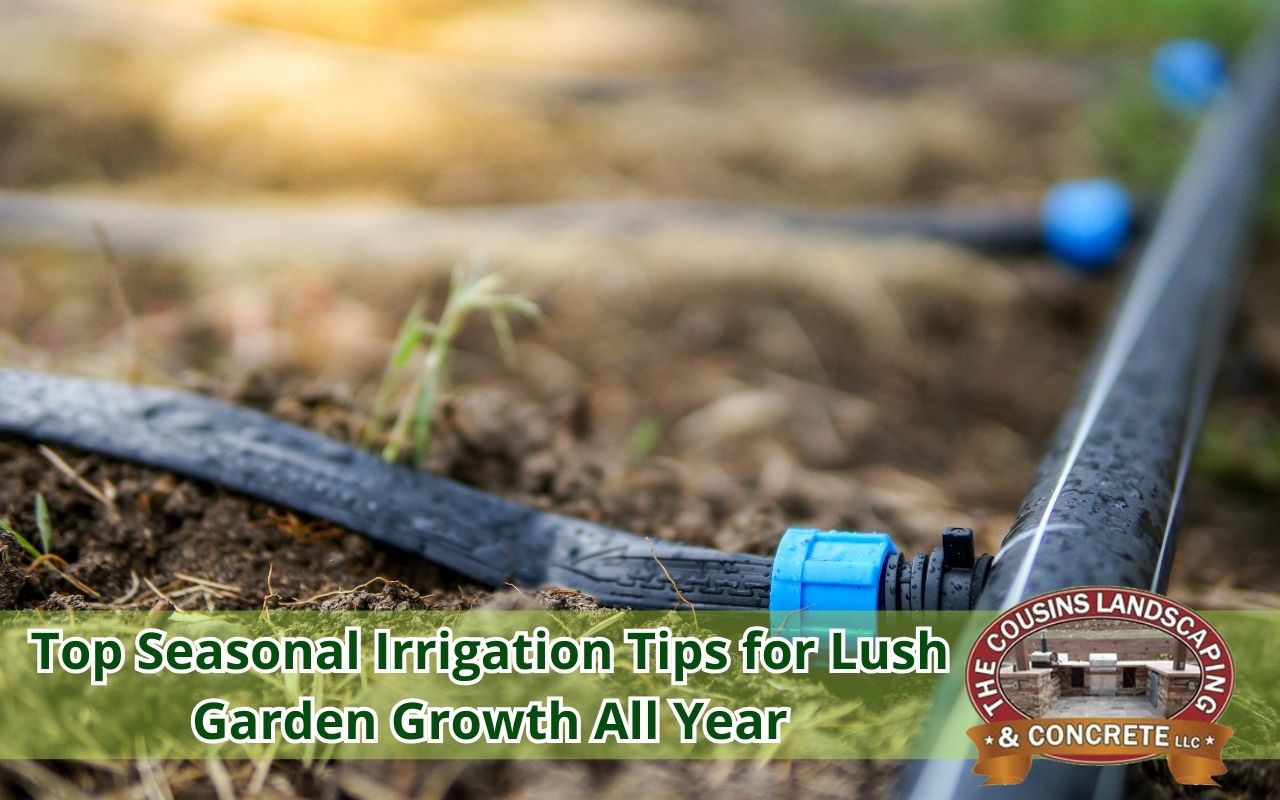
In the ever-changing rhythm of nature, keeping your garden vibrant can feel challenging. However, seasonal irrigation tips help overcome these hurdles. Each season brings unique demands, from summer heat to winter frost. With smart watering strategies, your garden can thrive. Moreover, proper irrigation enhances plant resilience and conserves water. By syncing with nature’s cycles, you’ll avoid overwatering or dehydration. In conclusion, embracing these methods creates a lush retreat that adapts gracefully to every season.
Understanding Seasonal Water Needs for Your Garden
Every garden’s water needs shift with time. Therefore, seasonal irrigation tips start with knowing how climate and daylight influence water use. For instance, hot summers increase evaporation, while cool seasons slow plant growth and reduce water demand. Soil type matters too. Sandy soils drain quickly, whereas clay soils hold moisture longer. Furthermore, adding compost improves soil structure and water retention. As a result, observing your plants helps: wilting or soggy soil signals the need to adjust watering. Ultimately, smart observation ensures your garden thrives naturally.
Summer: Beating the Heat with Smart Irrigation Techniques
Summer demands efficient watering practices. For example, deep, infrequent watering encourages stronger root systems. In addition, early-morning watering reduces evaporation and supports plant health. Likewise, mulching helps lock moisture and control soil temperature. Targeted irrigation systems like drip lines deliver water directly to roots, minimizing waste. Meanwhile, monitoring soil moisture prevents under or overwatering. Consequently, with these seasonal irrigation tips, your garden withstands summer heat while conserving valuable water resources.
Fall: Preparing Your Garden for Cooler Temperatures
As temperatures fall, watering frequency must decline. Therefore, seasonal irrigation tips for fall suggest gradual adjustment. Even so, evergreens and young shrubs still need hydration. Moreover, adding mulch stabilizes soil temperature and preserves moisture. At the same time, inspecting irrigation systems before frost prevents damage. In this way, proper maintenance prepares your garden for spring renewal. As a result, fall care ensures plants remain healthy and resilient through seasonal change.
Winter: Protecting Plants from Frost and Cold Weather
Winter brings dormancy for many plants, yet irrigation remains important. For instance, occasional watering during mild spells sustains evergreens. Additionally, seasonal irrigation tips recommend watering early in the day to prevent ice damage. However, avoid watering right before freezing conditions. Furthermore, protect roots with mulch or frost cloths. Similarly, move containers to sheltered spots. In conclusion, these steps protect vulnerable plants and support minimal hydration during cold months.
Spring: Revitalizing Your Garden for the Growing Season
Spring signals growth and renewal. Thus, seasonal irrigation tips advise soaking the soil to activate microbes and roots. Moreover, check moisture a few inches below before setting a schedule. In addition, divide your garden into zones for targeted care. For example, containers may need frequent watering, while trees require deeper soaks. Therefore, by tailoring irrigation, you promote balanced growth across diverse plantings. Ultimately, spring irrigation fuels strong starts and flourishing gardens.
Implementing Drip Irrigation Systems for Efficient Watering
Drip irrigation systems release water slowly at plant roots, maximizing efficiency. In fact, seasonal irrigation tips highlight their adaptability through regulators and timers. Installing tubing and emitters is simple. Additionally, timers ensure precise watering at cooler times of day. Nevertheless, inspect systems regularly to prevent clogs or leaks. In the end, with drip irrigation, every drop counts toward healthier growth and reduced waste.
Adjusting Irrigation Frequency Based on Weather Patterns
Weather strongly influences irrigation needs. Consequently, track local patterns to skip watering after rain or increase during heatwaves. Furthermore, seasonal irrigation tips emphasize using technology like rain sensors and soil probes. Automated controllers, in turn, adjust schedules based on real-time data. As a result, this prevents excess watering and protects plants. Ultimately, fine-tuning systems improves efficiency, reduces bills, and fosters sustainable practices. Therefore, aligning with weather ensures your garden stays healthy and resilient.
Choosing the Right Plants for Low-Water Landscaping
Selecting drought-tolerant plants reduces water demand. Accordingly, seasonal irrigation tips recommend grouping plants with similar needs. For example, native species, succulents, and herbs thrive with less water. Moreover, mulching and soil amendments boost their performance. Consequently, this approach creates sustainable, water-wise landscapes. Low-water plants not only maintain beauty but also conserve resources. In conclusion, the right choices simplify irrigation and ensure vibrant gardens in every season.
Monitoring Soil Moisture Levels for Optimal Plant Health
Consistent soil monitoring prevents overwatering or drought stress. Therefore, seasonal irrigation tips suggest using moisture meters or probes for accuracy. Checking at root depth provides reliable data. Alternatively, simple methods like digging small holes offer tactile insight. Moreover, moist but not soggy soil signals proper hydration. Recording data, in turn, builds patterns for better irrigation planning. Ultimately, monitoring ensures precise water use and healthier plants.
Frequently Asked Questions
How often should I adjust my irrigation schedule with the changing seasons?
Review your routine at each season’s start and during major weather shifts. Additionally, weekly checks in spring and fall help adapt irrigation needs quickly.
Can I rely solely on rain sensors for my watering needs?
Rain sensors help, but they should not replace soil checks. Therefore, combine them with manual inspections for balanced surface and subsurface hydration.
What is the best time of day to water in each season?
Morning is best across all seasons. Moreover, cooler hours reduce evaporation. In winter, mid-morning watering additionally prevents surface freezing issues.
Are drip irrigation systems suitable for small home gardens?
Yes, drip systems scale easily. In fact, they reduce evaporation and target roots directly. Consequently, even small gardens benefit from efficient water use.
How can I tell if my soil moisture levels are optimal?
Moist soil should clump but break apart easily. Furthermore, moisture meters showing 50–70% indicate good hydration. Therefore, regular checks prevent plant stress.
Cultivating a Year-Round Lush Garden Oasis
Seasonal irrigation tips help you nurture resilient gardens all year. By aligning practices with nature, you conserve water and support growth. From summer soaks to winter care, these strategies ensure steady blooms. Moreover, by observing your plants and applying smart techniques, you enjoy a thriving oasis. For professional help, explore our landscaping services today.
Need tailored support for your garden? Then, contact our experts through the contact page. We proudly serve areas like Brighton and Aurora. Ultimately, let’s bring your dream garden to life.
